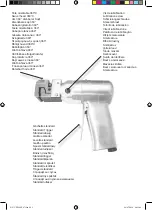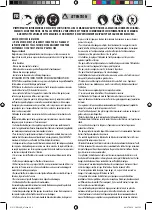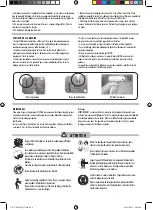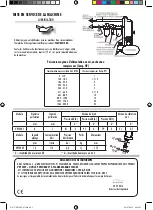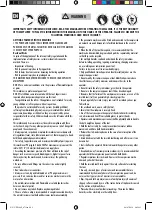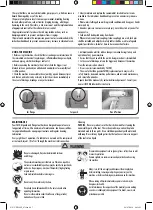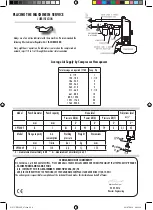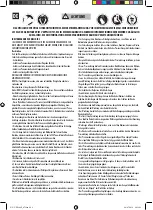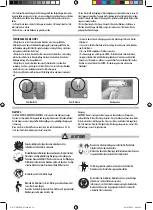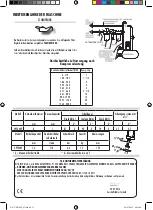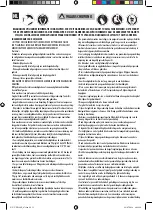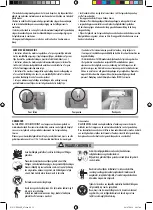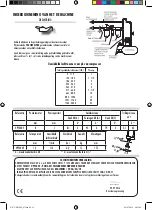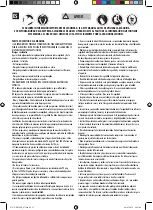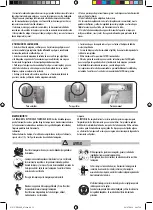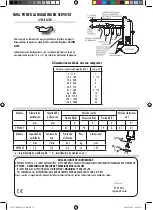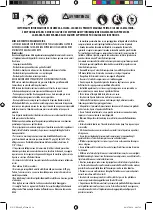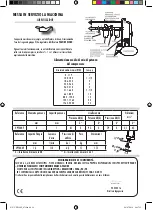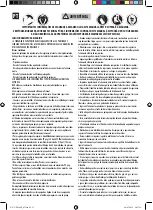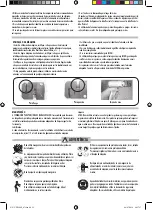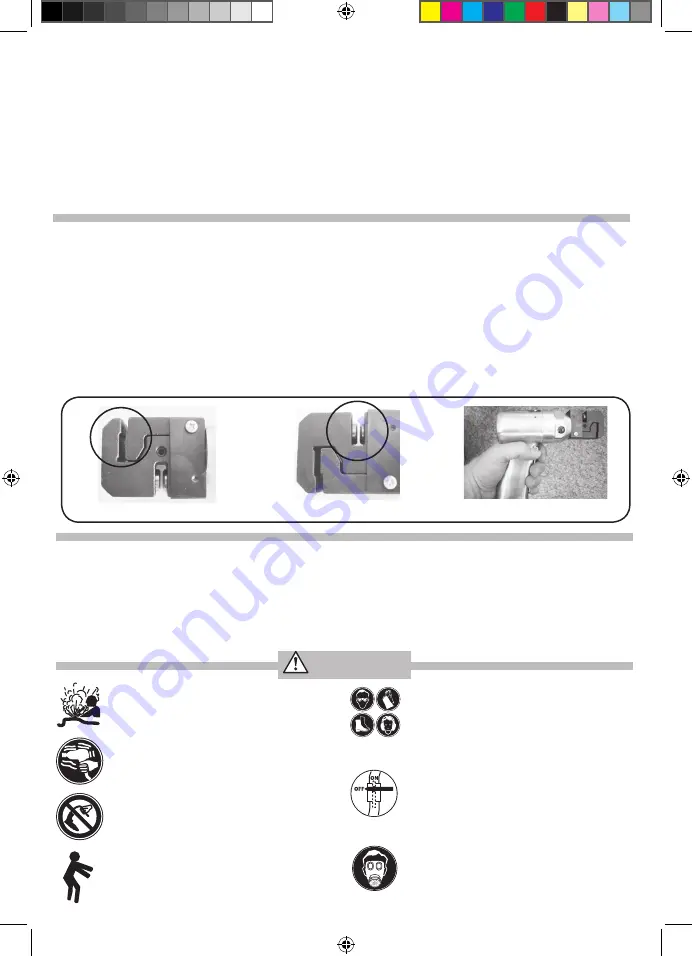
Do not use damaged, frayed or deteriorated air hoses
and fittings.
The pneumatic machine can vibrate in use. Vibration, repetitive
motions or uncomfortable positions may be harmful to your hands
and arms. Stop using any machine if discomfort, tingling feeling
or pain occurs.
Seek medical advice before resuming use.
Do not carry the machine by the hose.
Keep body stance balanced and firm. Do not overreach when
operating this machine.
Do not use the machine under the influence of drugs, alcohol,
medication or if you are tired.
Use protective equipment such as glasses, gloves, safety shoes as well
as acoustic protection.
Remain vigilant, use common sense and pay attention when using
the machine.
Always turn off the air supply and disconnect the airsupply hose
before installing, removing or adjusting any accessory on this
machine, or before performing any maintenance on this machine.
When working with certain materials, exposure to dust may be
dangerous for health.
Get information on the composition of the material you are working
on and use suitable protective equipment. If in doubt, use as much
protection as possible.
WARNING
USING THE MACHINE
• Before using the machine, check that there is no dangerous interaction with
the immediate environment (explosive gas, inflammable or dangerous liquid,
unknown piping, electric sheathing or cable, etc).
• Before connecting the machine to the air inlet, check the trigger is not
blocked in the on position by an obstacle and no adjustment or assembly tool
is still in position.
• Check the machine is connected to the network by a quick disconnect joint
and that an air braker valve is close by to shut the air down immediately in
the event of blockage, breakage or any other incident.
• Anticipate and be alert for sudden changes in motion during start up and
operation of any power machine.
• Ensure that the unit on which the work is being carried out is immobilised.
• In the event of blockage, release the trigger and disconnect the machine
from the compressed air network.
• Use accessories recommended by FACOM.
• The use of other than genuine FACOM replacement parts may result in
safety hazards, decreased machine performance, and increased maintenance,
and cancel all warranties.
Repairs should be made only by authorized trained personnel. Consult your
nearest FACOM Authorized Service Centre.
• Ensure that there are no electrical cables, gas pipes, etc., which can cause a
hazard if damaged by use of the tool.
• Exposure to high noise levels can cause permanent, disabling hearing
loss and other problems, such as tinnitus (ringing, buzzing, whistling or
humming in the ears). Therefore, a risk assessment and the implementation
of appropriate controls for these hazards are essential.
• Appropriate controls to reduce the risk may include actions, such as
damping materials, to prevent workpieces from «ringing».
• Operate and maintain the compression power tool as recommended in the
instructions handbook to prevent an unnecessary increase in vibration levels.
• Select, maintain and replace the consumable/inserted tool as recom-
mended in the instructions handbook to prevent an unnecessary increase
in noise.
• Wear warm clothing when working in cold conditions and keep your hands
warm and dry.
• Air under pressure can cause severe injury: never direct air at yourself or
anyone else.
• Cold air shall be directed away from hands.
• Whenever universal twist couplings (claw couplings) are used, lock pins
shall be installed and whipcheck safety cables shall be used to safeguard
against possible hose-to-tool or hose-to-hose connection failure.
MAINTENANCE
Your FACOM punch and flange tool has been designed to operate over a
long period of time with a minimum of maintenance. Continuous satisfac-
tory operation depends upon proper tool care and regular cleaning.
Lubrication
Every eight hours’ operation, if a lubricator is not used on the compressed
air network, inject 1/2 to 1cm
3
through the machine’s inlet connection.
Cleaning
WARNING: Never use solvents or other harsh chemicals for cleaning the
non-metallic parts of the tool. These chemicals may weaken the plastic
materials used in these parts. Use a cloth dampened only with water and
mild soap. Never let any liquid get inside the tool; never immerse any part
of the tool into a liquid.
For flange
For punch
Hand Position
NU-V.PF300F_0716.indd 7
08/07/2016 08:26:21
Summary of Contents for V.PF300F
Page 49: ...FACOM 1 2 1 3 FACOM FACOM FACOM NU V PF300F_0716 indd 49 08 07 2016 08 28 01...
Page 54: ...RU FACOM 6 2 620 10 6 2 6 2 NU V PF300F_0716 indd 54 08 07 2016 08 28 06...
Page 55: ...FACOM 1 2 1c 3 FACOM FACOM FACOM C NU V PF300F_0716 indd 55 08 07 2016 08 28 08...
Page 61: ...NOTA NU V PF300F_0716 indd 61 08 07 2016 08 28 19...


